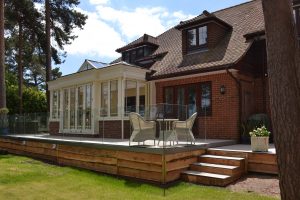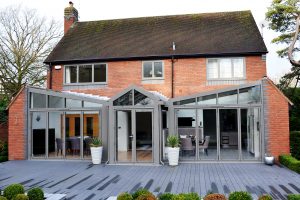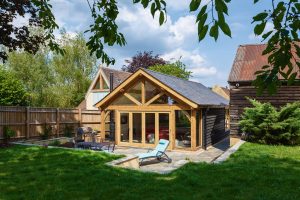Planning Permission Information
Planning Permission
There is so much to read and see about the planning permission process within England and Wales on the internet. Most of it confusing, and an awful lot of “advice” is actually out of date.
We are really conscious of the fact we can “bore for the olympics” on planning permission, and are really happy to talk through any details you wish – and promise to try not to be too boring- we also know many clients would appreciate a quick snapshot of the process.
Planning Permission should not be confused with Building Regulations approval. Building regulations relate to technicalities such as structure, quality of materials, conformity to insulation and heating standards and many other items which will be established at the detail design stage.
Find out more about the planning elements below:
The planning process within the UK is intended to provide a good quality built environment that suits the locality it is in. It does this by producing a local plan (you can find this in your local authority) which will zone areas for typical developments which would be allowed. This might be Industrial, commercial, domestic etc. In most instances our clients will be constructing extensions so the original development will already be built, and we will consider planning as it relates to extensions to existing buildings.
EVERY development in the UK requires conformity to the planning regulations BUT Some developments are “pre approved” by default.
This means they are covered under permitted development rights (PDR) for the property. Unless PDR rights are removed, every property has them.
Often we are asked if consulting the local authority in their Pre Application process is worthwhile. This process enables a scheme to be submitted to the planning office for an opinion if it would pass a planning application. This incurs a fee (generally same as an application) and time. It also carries no weight in the planning application decision. Generally for extensions it is not a good use of time or money, bearing in mind the Pre Application would require drawings, details, submission fees – in fact pretty much all the same details as a full application.
The conditions that Permitted Development can not be carried out are detailed on the planning portal website. (They do change from time to time and the information below is current at the time of publishing.) Typically this includes:
An article 4 direction (this removes the Permitted Development rights by the local authority instruction. For instance, it sometimes happens on new housing developments, it might be as a condition of an already developed site, it might be as a result of local requirements.
An Article 2(3) area of designated land, currently
- a conservation area
- an area of outstanding natural beauty
- an area specified by the Secretary of State for the purposes of enhancement and protection of the natural beauty and amenity of the countryside
- the Broads
- a National Park
- a World Heritage Site
Note that a popular misconception is that Green Belt land has no facility for Permitted Development.
What CAN be carried out is very much subject to the individual house layout design. Generally extending to the rear, extending to the side and free standing buildings are fine within specified sizes.
What CAN NOT be carried out is covering more than 50% of land around the original house can be covered by buildings. There are also exclusions on certain items such as Verandahs, Raised Platforms and Balconies.
The original house is defined as it was built OR as it stood on 1st July 1948. Any new extension must be calculated from the original building and not any other extensions that may be fitted.
Given that you have Permitted Development rights, the size of the extension will be limited to Height, Width and Depth. Heres a brief outline summary.
For a Single Storey extension:
Height – 4 metres maximum.
Width – Ok across rear wall of house – or no more than Half width of house for side extensions. (be careful if rear wall steps – this is classed as a SIDE EXTENSION)
Depth – No more than 6 metres (or 8 metres on a Detached house)
For a Two Storey extension:
Height – eaves no higher than existing eaves and ridge no higher than existing ridge
Depth – 3 m from rear of house
Location – no less than 7m from the boundary of the curtilage
The full plans process means formally submitting your plans and details of your extension which will be assessed by the planning department, A common misconception is the planning department is against any development. It is not. The default position of planners is they will start form approval of a scheme and look for reasons why it might not be done.
Planning Officers are generally very caring and diligent people working within the confines of a fairly rigid process. Please DO NOT take any interaction with planners personally. We have seen many instances where clients are so emotionally involved they lose sight of the end game – to get the extension approved.
Applications for extensions will generally be handled under Delegated Powers, which the Planning Officer for the area will appraise and make a decision on the scheme.The local authority should determine the scheme within a specified timescale (8 weeks) although in practice this is always extended.
The process will include publication and notices of development which will be displayed locally to your house. It will also include writing to neighbours to get their views on your extension. This process has a specified time for response. You can follow this through online as it will be kept updated on the planning section of the local authority website.
The Planning Officer will be consulting other interested parties too. This might be highways officers, local parish council, historic consultants and others. All of the replies are collated and considered. The Planning Officer may want to make amendments to the scheme, and may consult to ask the client to change design elements to avoid the scheme being rejected. This may result in amending the plans to achieve approval.
The scheme will then either be approved, rejected, or there is a possibility to withdraw the application.
When approved the scheme can move on to construction. Generally the scheme will be time limited to 3 years for construction to commence. There may also be other conditions to adhere to.
If the scheme is rejected, the options are to re design and apply again or to go through the appeal process.
Sometimes it may be better to withdraw the application prior to it being rejected. This enables a redesign to be considered and the application to be resubmitted “warm” and keep the momentum going.
If a reapplication is made soon after the rejection or withdrawal, the reapplication will not carry the standard planning fee. It will also have the advantage of having direct feedback from planners to guide what they would approve.
If an application is rejected you will have the right to appeal. Think carefully before using this process. There are situations where it is the right thing to do – but they are few. The process involves an independent planning specialist. They will determine the appeal based on the written submissions – the paper trail. Planning Officers will never reject an application without a justifiable reason. We would never submit an application without a good and justifiable case. So the independent inspector will judge as they see it. It is time consuming (6 months not uncommon) it is stressful and generally gets in the way of obtaining approval for your extension.
Get in touch today
Find out how we can help design your dream space today.
Latest Case Studies

South Coast – Traditional Orangery
Our client wanted better use of their kitchen and impractically shaped conservatory so Appropriate Design Solutions decided to bring their stunning outside views inside.

Warwickshire – Ultra Modern
Our client wanted something truly unique. They were so impressed by what Appropriate Design Solutions delivered they asked us to create a front porch, garden lobby and install new windows!

Buckinghamshire – Rustic Listed Farmhouse
This stunning, listed farmhouse required a total refurbishment and a new living space for a growing family. Appropriate Design Solutions provided a range of services including Concept Design, Planning and Listed Building consent.


